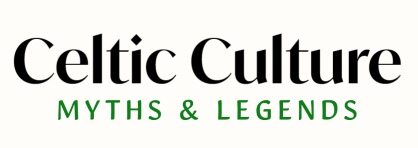The Celts passed down their culture through spoken word, never documenting their history or knowledge. This is why there’s a significant gap in our understanding of them before their interaction with the classical civilizations of Greece and Rome. They were generally well-educated, focusing on subjects like religion, philosophy, geography, and astronomy.
The Celtic peoples have a history that spans thousands of years. At one point, much of Europe was Celtic, with England entirely under Celtic rule. However, the Romans, Angles, and Saxons eventually arrived and pushed the Celts to the northern and western regions.
A significant event in Celtic history was the Fifth-Century battle, where King Arthur and his Celtic army fought against what the Celts referred to as the dark pagan hordes in England. The Celts viewed King Arthur’s defeat as the end of civilization. King Arthur remains a significant figure in Celtic legend, with the original historical tale now heavily embellished with medieval knights and traditions.
Ancient Celtic Art was rich with interwoven patterns, perfect for conversion into tattoo designs, intricate knotwork, spirals, animal forms, and vibrant colors. The early Celts showcased their art in various forms: metal, jewelry, weapons, figurines, and pots are just a few examples of the artifacts that have been discovered.
The tradition of knot work in manuscript painting spread the style from Britain and Ireland to Scotland (Pictland and Dalriada), Wales, and Northumbria, and with the travels of the missionaries from the Celtic church to Europe.
Viking raiders later adopted many of the design concepts into their own unique, more complex style of animal interlace.
Modern Celtic peoples have developed traditional symbols for themselves. People of Celtic descent worldwide often proudly display these symbols as tattoos and in many other ways to demonstrate their Celtic heritage.
For instance, the most recognized Irish symbol is the three-leaved shamrock, although the Harp is also frequently used. The harp has been the national instrument for all the Celtic people since their history’s inception.
The Scottish symbol is the Thistle, along with the wearing of tartans or the kilt. The Welsh flag features a red dragon on a green and white background. The Welsh Celtic people regard the red dragon as their most Welsh symbol, but they also recognize the leek and the daffodil.
Celtic knots are complete loops with no end or beginning. Celtic animal interlace is similar in construction, but the cords terminate in feet, heads, tails, etc. In your tattoo, pure knots should always be unending unless the loose end of a strand is stylized into a zoomorphic element or a spiral. As for symbolism: knotwork designs are emblematic in modern times of the Celtic nationalities. The symbolism that has come down through the ages is as obscure and indirect as much of the speech and literature of the Celtic people. Knot work’s meaning defies literal translation and should be sought at a deeper level. The repeated crossing of the physical and the spiritual are expressed in the interlace of the knots. The never-ending path of the strands may represent the permanence and the continuum of life, love, and faith.
Celtic symbolism translates well into custom Tattoos. Celtic tattoos are one of the most popular design choices. With their intricate weave and such a wide variety of art to choose from, it is no wonder that such a diverse array of people have chosen it as their tattoo. The vast majority of the designs used in Celtic tattoos come from illuminated manuscripts as well as ancient art from Ireland, Scotland, and England.
Celtic tattoos are usually not strictly representational, and they do not attempt to duplicate the world and nature exactly. They are made of lines that form an intricate interweaving formed to complete a cycle – there is no end or a beginning to a Celtic knot.
For those with Celtic heritage, be they Irish, Scots, Welsh, or of European descent, donning a Celtic tattoo can be a way of expressing pride in their lineage, reaffirming a connection to the indigenous artistic style of their forebears.
Celtic Tattoos are not a simple design for the artist to work with; therefore, it is strongly advised for anyone considering getting one to examine the existing work of the artist and inquire about his or her specific experience in designing Celtic tattoos.
